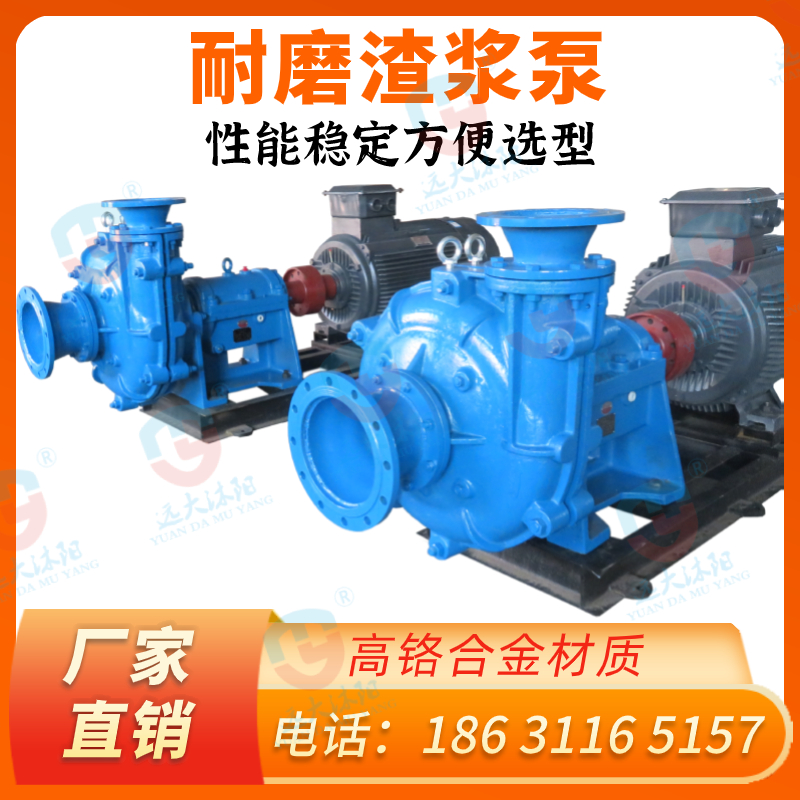- 地址:
- 安国市南阳工业区
- 邮箱:
- 415130881@qq.com
- 电话:
- 18631165157
- 传真:
- 0312-3427286
- 手机:
- 18631165157
陶瓷渣浆泵的设计理念
陶瓷渣浆泵的设计理念是为了替代原来的橡胶护套渣浆泵,金属护套渣浆泵等。其陶瓷的主要材质为碳化硅,各个厂家工艺不同,主要包括树脂结合碳化硅和烧结碳化硅。
在选择陶瓷材料时,需要选择合适的陶瓷材料。碳化硅是最常用的材料,但不同的厂家可能会使用不同类型的碳化硅,如树脂结合碳化硅和烧结碳化硅。这些不同的材料类型会决定泵的性能和耐用性。
碳化硅渣浆泵的设计理念是为了解决传统渣浆泵材料(如橡胶、金属等)在使用过程中存在的问题,如耐腐蚀性差、耐磨性不足、抗热震性差等。这些缺陷会导致泵的使用寿命降低,维护成本增加,甚至可能引发安全事故。因此,采用具有更好性能的碳化硅材料制造渣浆泵是行业发展的必然趋势。
碳化硅渣浆泵的主要优势在于其优异的耐腐蚀性、耐磨性和抗热震性。这些特性使得碳化硅渣浆泵在化工、石油、矿产等行业的应用中具有很高的可靠性和稳定性。此外,碳化硅渣浆泵还具有较高的耐磨性,可以有效减少颗粒对泵内部的磨损,从而延长泵的使用寿命。
在选择碳化硅渣浆泵时,需要根据具体的使用环境和要求来选择合适的陶瓷材料。树脂结合碳化硅和烧结碳化硅虽然都属于碳化硅的范畴,但它们的性能和应用范围有所不同。树脂结合碳化硅具有较高的强度和韧性,适用于较高压力和较高温度的环境;而烧结碳化硅则具有较高的硬度和耐磨性,适用于较硬的磨料磨损。因此,在选择碳化硅陶瓷渣浆泵时,应根据实际需求选择合适的陶瓷材料。
随着科技的发展和工业需求的不断提高,碳化硅渣浆泵的性能将得到进一步优化。例如,可以通过改进陶瓷材料的配方和工艺来提高其耐腐蚀性和抗热震性;通过引入纳米技术来提高其耐磨性和抗磨蚀性;通过优化泵的结构设计和参数设置来提高其运行效率和节能效果。这些改进将使碳化硅渣浆泵在更多领域得到广泛应用,为工业生产带来更高的效益和更好的环保性能。
Design Concept of Ceramic Slurry Pump
The design concept of ceramic slurry pumps is to replace the original rubber sheathed slurry pumps, metal sheathed slurry pumps, etc. The main material of its ceramics is silicon carbide, and different manufacturers have different processes, mainly including resin bonded silicon carbide and sintered silicon carbide.
When selecting ceramic materials, it is necessary to choose appropriate ceramic materials. Silicon carbide is the most commonly used material, but different manufacturers may use different types of silicon carbide, such as resin bonded silicon carbide and sintered silicon carbide. These different material types will determine the performance and durability of the pump.
The design concept of silicon carbide slurry pump is to solve the problems existing in the use of traditional slurry pump materials (such as rubber, metal, etc.), such as poor corrosion resistance, insufficient wear resistance, and poor thermal shock resistance. These defects can lead to a decrease in the service life of the pump, an increase in maintenance costs, and even potential safety accidents. Therefore, using silicon carbide materials with better performance to manufacture slurry pumps is an inevitable trend in the industry's development.
The main advantage of silicon carbide slurry pumps lies in their excellent corrosion resistance, wear resistance, and thermal shock resistance. These characteristics make silicon carbide slurry pumps highly reliable and stable in applications in industries such as chemical, petroleum, and mining. In addition, the silicon carbide slurry pump also has high wear resistance, which can effectively reduce the wear of particles inside the pump, thereby extending the service life of the pump.
When selecting a silicon carbide slurry pump, it is necessary to choose the appropriate ceramic material based on the specific usage environment and requirements. Although both resin bonded silicon carbide and sintered silicon carbide belong to the category of silicon carbide, their performance and application range are different. Resin bonded silicon carbide has high strength and toughness, suitable for environments with higher pressures and temperatures; Sintered silicon carbide has higher hardness and wear resistance, making it suitable for harder abrasive wear. Therefore, when selecting a silicon carbide ceramic slurry pump, appropriate ceramic materials should be selected based on actual needs.
With the development of technology and the continuous improvement of industrial demand, the performance of silicon carbide slurry pumps will be further optimized. For example, improving the formula and process of ceramic materials can improve their corrosion resistance and thermal shock resistance; By introducing nanotechnology to improve its wear resistance and corrosion resistance; By optimizing the structural design and parameter settings of the pump, its operational efficiency and energy-saving effect can be improved. These improvements will enable the widespread application of silicon carbide slurry pumps in more fields, bringing higher efficiency and better environmental performance to industrial production.

上一条:沙石泵的使用方法如何引水
下一条:渣浆泵两台串联的质量


